Resources
Bibliographies
The following are suggestive rather than complete bibliographies and deal with the use of the bible, specifically, avoiding subjects that would swell to too great a size. So, for example, early modern preaching, ecclesiology and religion more generally are not dealt with, though they may often by intricately involved in biblical usage.
The Bible in Early Modern Culture
Christopher Hill, The English Bible and the Seventeenth-Century Revolution (London, 1993)
Deborah Shuger, The Renaissance Bible: Scholarship, Sacrifice and Subjectivity (Berkeley: University of California Press, 1994)
Jonathan Sheehan, The Enlightenment Bible: Translation, Scholarship, Culture (New Haven: Princeton University Press, 2005)
Philip C. Almond, Adam and Eve in Seventeenth Century Thought (Cambridge: Cambridge University Press, 1999)
Arnold Williams, The Common Expositor: An Account of the Commentaries on Genesis, 1527-1633 (Chapel Hill: University of North Carolina Press, 1948)
Michele Osherow, Biblical Women's Voices in Early Modern England (Aldershot: Ashgate, 2009)
Naomi Tadmor, The Social Universe of the English Bible: Scripture, Society and Culture in Early Modern England (Cambridge: Cambridge University Press 2010)
Hannibal Hamlin and Norman W. Jones (eds), The King James Bible after Four Hundred Years: Literary, Linguistic, and Cultural Influences (Cambridge University Press, forthcoming, 2011)
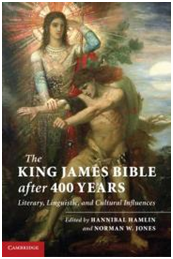 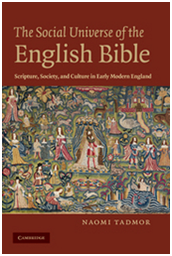 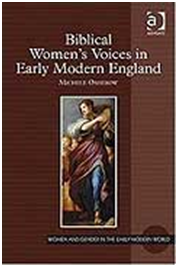 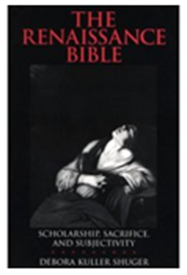 |
Histories of the Bible
Christopher de Hamel, The Book: A History of the Bible (London: Phaidon, 2001)
Alfred W. Pollard (ed.), Records of the English Bible: The Documents Relating to the Translation and Publication of the Bible in English 1525-1611 (Oxford: Oxford University Press, 1911)
Lori Anne Ferrell, The Bible and the People (New Haven: Yale University Press, 2009)
Kimberly van Kampen and Paul Saenger (eds), The Bible as Book: The Earliest Printed Editions (London: British Library, 1999)
Andrew Hass, David Jasper, and Elisabeth Jay, The Oxford Handbook of English Literature and Theology (Oxford: Oxford University Press, 2007)
David Kling, The Bible in History: How the Texts Have Shaped the Times (Oxford: Oxford University Press, 2006)
Thomas J. Heffernan and Thomas E. Burman, Scripture and Pluralism: Reading the Bible in the Religiously Plural Worlds of the Middle Ages and Renaissance (Leiden: Brill, 2005)
David S. Katz, God's Last Words: Reading the English Bible from the Reformation to Fundamentalism (New Haven: Yale University Press, 2004)
King James Bible
Gerald Bray, Translating the Bible: From William Tyndale to King James (London: Latimer Trust, 2010)
Gordon Campbell, Bible: The Story of the King James Version 1611-2011 (Oxford: Oxford University Press, 2010)
David Crystall, Begat: The King James Bible and the English Language (Oxford: Oxford University Press, 2010)
David Daniell, The Bible in English (New Haven: Yale University Press, 2003)
Gerald Hammond, Making of the English Bible (Carcanet Press, 1988)
Alister McGrath, In the Beginning: The Story of the King James Bible and How It Changed a Nation, a Language, and a Culture (Anchor books, 2002)
Adam Nicolson, Power and Glory: Jacobean England and the Making of the King James Bible (Harper Perennial, 2003)
Derek Wilson, The People's Bible: The Remarkable History of the King James Version (Lion Hudson, 2010)
|
|
||
Annotation and Interpretation
Scott Mandelbrote, ‘The Authority of the Word: Manuscript, Print and the text of the Bible in Seventeenth-Century England’, in Julia Crick and Alexandra Walsham (eds), The Uses of Script and Print, 1300-1700 (Cambridge: Cambridge University Press, 2004)
Patrick Collinson, ‘The Coherence of the Text; How it Hangeth Together: The Bible in Reformation England’ in W.P. Stephens (ed.), The Bible, The Reformation and the Church (Sheffield: Sheffield Academic Press, 1995), 84-108
Raymond Gillespie, ‘Reading the Bible in Seventeenth-Century Ireland’, in Bernadette Cunningham and Máire Kennedy, (ed.), The Experience of Reading: Irish Historical Perspectives (Dublin: Library Association of Ireland, 1999), 10-38.
Anne Scott,'"Visible Incarnations of the Unseen": Henry Drummond and the practice of typological exegesis', British Journal for the History of Science, 37:4:135 (2004), 435-54.
Blair Worden, ‘Oliver Cromwell and the Sin of Achan', in Derek Beales and Edward Dawson; Geoffrey Francis Andrew Best (eds), History, Society and the Churches: Essays in Honour of Owen Chadwick (Cambridge, 1985), 125-45
R. Po-chia Hsia (ed.), Cambridge History of Christianity, Volume 6, Reform and Expansion 1500–1660
Robert S. Miola (ed.), Early Modern Catholicism: An Anthology of Primary Sources (Oxford: Oxford University Press, 2007)
Alastair Hamilton, The Apocryphal Apocalypse: The Reception of the Second Book of Esdras (4 Ezra) from the Renaissance to the Enlightenment (Oxford-Warburg Studies, 1999)
David Sandler Berkowitz, Evolution of Art and Scholarship in the Medieval and Renaissance Bible (University Press of New England, 1980)
Thomas J. Heffernan and Thomas E. Burman, Scripture and Pluralism: Reading the Bible in the Religiously Plural Worlds of the Middle Ages and Renaissance (Studies in the History of Christian Traditions, 2005)
John S. Coolidge, The Pauline Renaissance in England : Puritanism and the Bible (London: Clarendon Press, 1970)
Dan W. Clanton, The Good, the Bold, the Beautiful: The Story of Susanna in Its Renaissance Interpretation (Old Testament Studies, 2006)
Paul J. Korshin, Typologies in England 1650-1820 (Princeton: Princeton University Press, 1982 )
Joseph A. Galdon, Typology and Seventeenth-Century Literature (The Hague: Mouton, 1975)
D. R. Dickson, ‘The Complexities of Biblical Typology in the Seventeenth Century’, Renaissance and Reformation/Renaissance et Reform, 11:3 (1897), 253-272.
John Knott Jr., Sword of the Spirit: Puritan Responses to the Bible (Chicago: University of Chicago Press, 1980).
J. A. Mazzeo, ‘Cromwell as Davidic King’ in Mazzeo (ed.), Reason and the Imagination: Studies in the History of Ideas, 1600-1800 (New York: Columbia University Press, 1962), 29-55.
W. P. Stephens (ed.), The Bible, The Reformation and the Church (Sheffield: Sheffield Academic Press, 1995)
J. P. Burgess, 'Biblical Poet and Prophet: Gerard Winstanley's use of Scripture in The Law of Freedom', Journal of Religious History, 14 (1987), 269-82
Reception histories of biblical figures and books
Miriam Muskin,‘Wisdom by Adversity': Davidic Traits in Milton's Samson’, Milton Studies, 14 (1980), 233-55.
Mary Ann Radzinowicz, ‘Forced Allusions: Avatars of King David in the Seventeenth Century’, in Trvino Beret and Michael Lieb, Literary Milton: Text, Pretext, Context (Pittsburgh: Duquesne University Press, 1994)
Kenneth G. C. Newport, 'Benjamin Keach, William of Orange and the Book of Revelation: a study in English prophetical exegesis', Baptist Quarterly, 36:1 (1995), 43-52.
Yvonne Sherwood, A Biblical Text and its Afterlives: The Survival of Jonah in Western Culture (Cambridge: Cambridge University Press, 2000)
Noam Flinker, The Song of Songs in English Renaissance Literature : Kisses of their Mouths (Cambridge: Brewer, 2000)
Esther Gilman Richey, The Politics of Revelation in the English Renaissance (Columbia: University of Missouri Press, 1998)
Hannibal Hamlin, Psalm Culture and Early Modern English Literature (Cambridge: Cambridge University Press, 2004)
Anna Linton, 'Sacrificed or Spared? The Fate of Jephthah's Daughter in Early Modern Theological and Literary Texts', German Life & Letters, 57:3 (2004), 237-55
Alexandra Walsham, '"A Very Deborah?" The Myth of Elizabeth I as a Providential Monarch', in Susan Doran and Thomas S. Freeman, (eds), The Myth of Elizabeth (Basingstoke, 2003), 143-68
Anne McLaren, ‘Elizabeth I as Deborah : Biblical Typology, Prophecy and Political Power’, in Jessica Munns and Penny Richards (eds), Gender, Power and Privilege in Early Modern Europe (Harlow: Pearson, 2003), 90-107
John Stephen Morrill and Philip Baker, ‘Oliver Cromwell, the Regicide and the Sons of Zeruiah’, in Jason Peacey (ed.), The Regicides and the Execution of Charles I (Basingstoke: Palgrave, 2001), 14-35
John N. King, ‘James I and King David : Jacobean Iconography and its Legacy’, in Daniel Fischlin and Mark Fortier (eds), Royal Subjects: Essays on the Writings of James VI and I (Detroit: Wayne State University Press, 2002), 421-53.
Marie L. Ahearn, ‘David the Military Exemplum’, in Raymond-Jean Frontain and Jan Wojcik, The David Myth in Western Literature (West Lafayette: Purdue University Press, 1980)
Alex Barber, ‘”I Resolved to Give an Account of Most of the Persons Mentioned in the Bible”: Pierre Bayle and the Prophet David in English Biblical Culture’, in Ariel Hessayon, and Nicholas Keene (eds), Scripture and Scholarship in Early Modern England (Aldershot: Ashgate, 2006).
Michael F. Suarez, ‘A Crisis in English Public Life: The Popish Plot, Naboth's Vineyard (1679), and Mock-Biblical Satire's Exemplary Redress', Huntington Library Quarterly, 67:4 (2004), 529-52
Michele Osherow, ‘ “A Poore Shepherde and his Sling”: a Biblical Model for a Renaissance Queen', in Carole Levin, Jo Eldridge Carney and Debra Barrett-Graves, (eds), Elizabeth I: Always Her Own Free Woman (Burlington: Ashgate, 2003), 119-30.
Claudia Thomas Kairoff, ‘Classical and Biblical Models: the Female Poetic Tradition’, in Sarah Prescott and David Shuttleton (eds), Women and poetry, 1660-1750 (Basingstoke: Palgrave Macmillan, 2003), 183-202.
The Bible as Object
C Leslie Craig, ‘The Earliest Little Gidding Concordance’, Harvard Library Bulletin 1 (1947), 311-31
Joyce Ransome, ‘Monotessaron: The Harmonies of Little Gidding’, The Seventeenth Century, 20:1 (2005), 22-52
George Henderson, ‘Bible illustration in the Age of Laud’, Transactions of the Cambridge Bibliographical Society, 8 (1982), 173-204
Peter Stallybrass, ‘Books and Scrolls: Navigating the Bible’, in Jennifer Andersen and Elizabeth Sauer (eds) Books and Readers in Early Modern England (Philadelphia, 2002), 42-79
Evelyn Tribble, Margins and Marginality: The Printed Page in Early Modern England (Charlottesville, 1993), 11-56.
William H. Sherman, Used Books: Marking Readers in Renaissance England (Philadelphia, 2008), 79-109
Allan I. Macinnes, Thomas Riis & Frederik Pedersen (eds), Ships, Guns and Bibles in the North Sea and Baltic States, c.1350-c.1700 ( East Linton: Tuckwell Press, 2000)
Other Bibles
Maurice S. Betteridge, 'The Bitter Notes: the Geneva Bible and Its Annotations’, Sixteenth Century Journal, 14 (1983), 41-62
Tom Furniss, ‘Reading the Geneva Bible: Notes towards an English Revolution?’, Prose Studies, 31:1 (2009), 1-21
Gerald Snare, 'Reading Tyndale's Bible'. Journal of Medieval and Early Modern Studies, 35:2 (2005), 289-326
Biblical Scholarship
Scott Mandelbrote, 'English Scholarship and the Greek Text of the Old Testament, 1620–1720: the Impact of Codex Alexandrinus', in Ariel Hessayon and Nicholas Keene (eds), Scripture and Scholarship in Early modern England (Aldershot: Ashgate, 2006)
Ariel Hessayon and Nicholas Keene (eds), Scripture and scholarship in early modern England (Aldershot: Ashgate, 2006)
D. M. G. Stalker, 'An Aspect of the Use of the Old Testament in 17th Century Scotland', Records of the Scottish Church History Society, 10:3 (1950), 186-95.
Bible and Authors
James P. Byrd Jr., The Challenges of Roger Williams: Religious Liberty, Violent Persecution, and the Bible (Macon: Mercer University Press, 2002)
James Farr, 'Atomes of scripture: Hobbes and the Politics of Biblical Interpretation', in M. G. Dietz, (ed.), Thomas Hobbes and Political Theory (Lawrence (KA), 1990), 172-96.
Kevin Killeen, Biblical Scholarship, Science and Politics in Early Modern England: Thomas Browne and the Thorny Place of Knowledge (Aldershot: Ashgate, 2009)
Walter S. H. Lim, John Milton, Radical Politics, and Biblical Republicanism (Newark: University of Delaware Press, 2006)
Kim Parker, The Biblical Politics of John Locke (Waterloo, 2004)
Steven N. Zwicker, Dryden's Political Poetry: The Typology of King and Nation (1972)
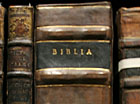
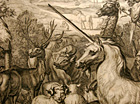
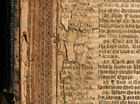
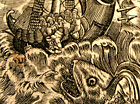
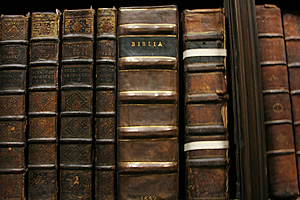
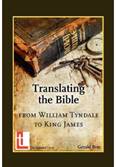
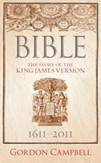
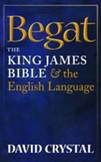
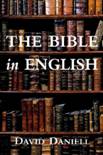
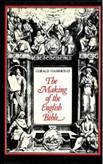
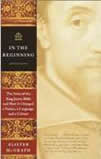
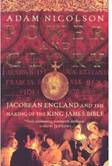
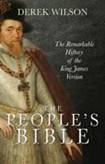
 Website by Heritage Technology
Website by Heritage Technology
